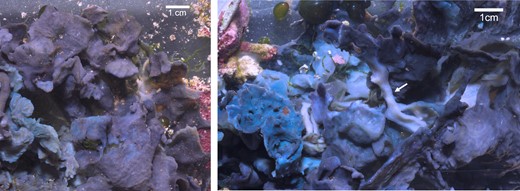2023-02-29 ケンブリッジ大学
◆ハチタケは聴力と視力が弱いため、鳥との相互作用が可能かどうかは不明ですが、タンザニアの一部の集団ではこの協力が発展している可能性があるとされています。ただし、詳細な確認が必要とされます。
<関連情報>
- https://www.cam.ac.uk/stories/birds-and-the-badgers
- https://zslpublications.onlinelibrary.wiley.com/doi/full/10.1111/jzo.13093
ミツアナグマとオオミツスイ鳥は協力してミツバチの巣にアクセスするのか?生態学的証拠とハニーハンターの証言 Do honey badgers and greater honeyguide birds cooperate to access bees’ nests? Ecological evidence and honey-hunter accounts
J. E. M. van der Wal, A. I. Afan, M. Anyawire, C. M. Begg, K. S. Begg, G. A. Dabo, I. I. Gedi, J. A. Harris, H. A. Isack, J. I. Ibrahim, G. A. Jamie, W.-B. W. Kamboe, A. O. Kilawi, A. Kingston, E. A. Laltaika, D. J. Lloyd-Jones, G. M. M’manga, N. Z. Muhammad, C. A. Ngcamphalala, S. O. Nhlabatsi, T. T. Oleleteyo, M. Sanda, L. Tsamkxao, B. M. Wood, C. N. Spottiswoode, D. L. Cram
Journal of Zoology Published: 29 June 2023
DOI:https://doi.org/10.1111/jzo.13093

Abstract
In parts of Africa, greater honeyguides (Indicator indicator) lead people to bees’ nests, after which people harvest the honey, and make beeswax and larvae accessible to the honeyguide. In scientific and popular literature, a similar cooperative relationship is frequently described between honeyguides and honey badgers (Mellivora capensis), yet the evidence that this occurs is unclear. Such a partnership may have implications for the origins of our own species’ cooperation with honeyguides and for the ecology and conservation of both honey badgers and honeyguides. Here, we review the evidence that honey badgers and honeyguides cooperate to access bees’ nests, drawing from the published literature, from our own observations whilst studying both species, and by conducting 394 interviews with honey-hunters in 11 communities across nine African countries. We find that the scientific evidence relies on incomplete and second-hand accounts and does not convincingly indicate that the two species cooperate. The majority of honey-hunters we interviewed were similarly doubtful about the interaction, but many interviewees in the Hadzabe, Maasai, and mixed culture communities in Tanzania reported having seen honey badgers and honeyguides interact, and think that they do cooperate. This complementary approach suggests that the most likely scenario is that the interaction does occur but is highly localized or extremely difficult to observe, or both. With substantial uncertainty remaining, we outline empirical studies that would clarify whether and where honeyguides and honey badgers cooperate, and emphasize the value of integrating scientific and cultural knowledge in ecology.


